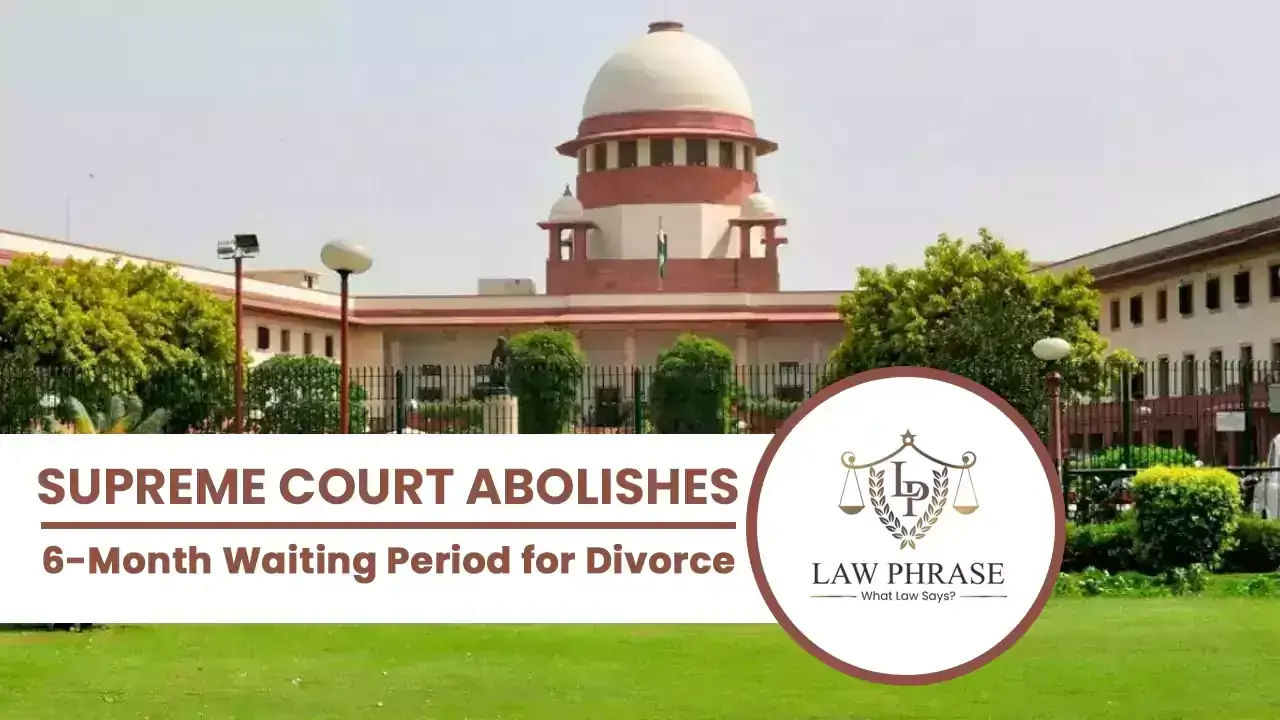Supreme Court Abolishes 6-Month Waiting Period for Divorce
 Law Phrase 18-01-2024
Law Phrase 18-01-2024

Table Of Contents:
On April 13, 2021, a five-judge Constitution bench headed by Justice SK Kaul passed one of the new rules for divorce in india that allows the Supreme Court to dissolve a marriage by granting divorce through mutual consent while dispensing with the 6-month waiting period mandated under the Hindu Marriage Act, 1955. In this blog post, we will explore the implications of this decision and its potential impact on marriages in India.
Background
The Hindu Marriage Act, of 1955 provides for divorce by mutual consent under Section 13-B. According to this section, a couple seeking divorce through mutual consent has to wait for a period of six months after filing a joint petition for divorce before their marriage can be dissolved. The rationale behind this waiting period is to give the couple an opportunity to reconsider their decision and try to resolve their differences.
Supreme Court's Ruling
The recent ruling by the Supreme Court provides relief to couples who wish to obtain a divorce quickly and efficiently. The Court held that the waiting period was not mandatory and that it could be waived if both parties agreed to do so. This decision was based on the Court's interpretation of Section 13-B of the Hindu Marriage Act, which does not explicitly mandate the waiting period.
Implications of the Ruling
The Court's decision was based on the principle of the right to personal autonomy, which is enshrined in the Constitution of India. The Court noted that the waiting period was an impediment to the exercise of this right by the parties to the marriage. By allowing parties to waive the waiting period, the Court has given them greater autonomy and control over their own lives and decisions.
The ruling is expected to reduce the burden on the already overburdened family courts by streamlining the divorce process. It will also provide relief to couples who wish to obtain a divorce quickly and without unnecessary delays.
Criticism of the Ruling
However, some critics have expressed concern that the waiver of the waiting period could lead to hasty decisions and increase the number of divorces. They argue that the waiting period provides an opportunity for couples to reconcile and save their marriage.
Conclusion
The recent ruling by the Supreme Court is a significant development in the evolution of India's divorce laws. It strikes a balance between the need for a waiting period and the right to personal autonomy of the parties to the marriage. It remains to be seen how this decision will impact the divorce rates in India, but it is clear that it will make the divorce process more efficient and less stressful for many couples.

